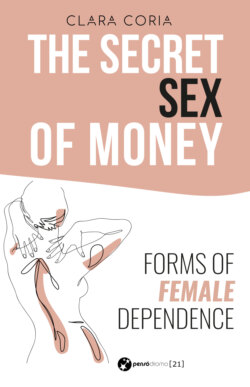Читать книгу The Secret Sex of Money - Clara Coria - Страница 9
На сайте Литреса книга снята с продажи.
Referential framework
ОглавлениеOur forays into life and science are not innocent. Behind each question, there lies an anticipated, though unknown, answer, in each glance a perceptive selection, in each appraisal an amount of prejudice.
There is a wealth of experiences, thoughts and beliefs that encapsulate our personal history, the period of history in which we live and the sociocultural, political, economic and religious conditioning to which we subscribe, either consciously or unconsciously.
Therefore, we must be aware that “objectivity” is relative and that the conclusions we reach are far from being “the only possible explanation”. In the best-case scenario, it will be one more that would proffer, from a new perspective, other items of evidence in order to grasp our complex world.
This is how I wish my contributions on the problem of money to be taken. They are nothing less than a tenacious and persevering exploration of an irksome question, often regarded as a taboo.
Being aware of their complexity, I have endeavoured to present my ideas as honestly as possible, including reflections that may seem to contradict or diverge from the formulated hypotheses.
Although money is omnipresent in daily life and unavoidable in social interaction – in our culture – many of its aspects are silenced and omitted. And this silencing is neither ingenuous nor harmless. On the contrary, it responds to entrenched beliefs and interests that I believe warrant explanation.
I will therefore attempt to highlight some of these interests and beliefs by providing referential frameworks that outlined and conditioned my research, perceptions, reflections and conclusions regarding “money”.
My approach seeks to put forward certain psychological and socio-cultural variables.
They are brought together in the analysis and interpretation of the facts and knowledge gleaned from my psychoanalytical background, and from theories and practices related to the task forces and what is known as women’s studies.4
I wish to underline that the central axis of this problem, for both women and men, is the questioning of patriarchal ideology, which is strongly related to Western Judeo-Christian5 culture.6 This ideology, in turn, contains convergence points with capitalism.
As patriarchy has been widely studied, I will only briefly outline its precepts in order to familiarize the reader with it. Thus I draw attention to the extensive research by Hamilton, Fudges, Oakley, Mitchell, Zaretsky, Groult, Astelarra and Borneman, among others (VI).
Patriarchal ideology conforms to the definition put forward by Schilder: “ideologies are systems of ideas and connotations that men hold in order to better guide their actions. To a greater or lesser extent, they are profoundly conscious or unconscious thoughts, held by those who uphold them as the result of pure reasoning, but which, however, often differ little from the religious beliefs with which they share a high degree of internal evidence despite a lack of empirical evidence” (VII).
The prevailing ideas of patriarchal ideology revolve around the basic premise of men’s superiority over women, a belief that leads to the establishment of the differences between sexes as one of hierarchy in which males are at the top of the ladder. From this vantage point, they exercise control and perpetuate an order, which contributes to the consolidation of women’s oppression. This hierachization justifies and endorses men’s domination over women.
The fundamental assumption of male superiority draws on biologist, naturalist and essentialist theories. It explains the hierarchical differences between the sexes as the result of exclusively biological factors that are, therefore, immutable. It relates sex with gender, omitting cultural factors that come into play in the learning and development of sexual gender. At the same time, it maintains that femininity and masculinity respond to an essence and that social roles are the expression of this essence.
This ideology is present in monotheistic religions such as Judaism and Christianity, not only in in the figure of its maximum exponent, God the Father but also, and fundamentally, in the claims of the prophets and apostles who emphasized women’s inferiority as the result of a divine plan.
This ideology promotes a sexual division through work whereby men are assigned to production and the public realm while women are for reproduction and the private and domestic realm. Among other things, this closely associates women’s activities with maternity and domesticity, thus contributing to the identification of the woman with Mother. The characteristics attributed to motherhood are regarded as “essentially” feminine.
Patriarchy tends to establish a strict control over female sexuality, among other aspects, through familiar institutions that demand, for example, fidelity of the woman but not of the man. As J. Mitchel (VIII) observes, the transition from polygamy to monogamy did not signify equality of sexual freedom.
In short, patriarchal ideology, sustained by biologism, emphasizes the essentiality of the differences between the sexes. It validates a heirarchialized relationship that expresses women’s oppression in all areas of social functioning: sexual, economic, intellectual, political, religious, psychological and emotional oppression, among others.
